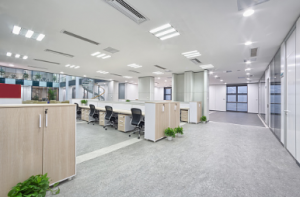When space is converted into an office, the process of office fit outs is a process that makes the building suitable for human occupation. It includes making the concrete structure functional and safe and doing basic electrical and mechanical work. The landlord will usually provide a basic fit out in a new building, but you can ask the landlord for help if you have special needs. In general, an office fit out should be carried out in phases.
 A new CFI-Adelaide office fitout is an opportunity to change an existing office. It will have a clean, modern design and be compatible with the current corporate identity. It will be able to accommodate any company’s current and future needs. This type of transformation may involve some or all of the following: a renovated space or a completely new building. For example, a renovated space can have a redesigned reception area. In some cases, the workspaces are open, but the offices are closed.
A new CFI-Adelaide office fitout is an opportunity to change an existing office. It will have a clean, modern design and be compatible with the current corporate identity. It will be able to accommodate any company’s current and future needs. This type of transformation may involve some or all of the following: a renovated space or a completely new building. For example, a renovated space can have a redesigned reception area. In some cases, the workspaces are open, but the offices are closed.
Office fit outs can take on many forms. In many cases, an empty building is prepared for the fit out process. Water and electrical supplies are typically in place, although the building still needs to be furnished. The process will include new furniture, plant life, lighting, and partitioning. A typical renovation should involve installing all of these systems but will also incorporate aesthetic features such as paint. The final result will depend on the company culture, work ethic, and team size.
The CFI-Adelaide office fitout process requires planning and a good understanding of logistics. Depending on the size of the space, the office fitout may require the tenant to contribute to the cost of certain specialised improvements. These improvements can be made during the construction phase or after the construction process is completed. However, the process should always involve consultation and coordination with the client. It should be done with care and attention, and it should be successful for the business.
A new office fitout will often include installing quiet spaces for employees to conduct confidential and sensitive phone calls. While many offices are still using landlines, some have switched to mobile phones. These spaces allow employees to make private calls in a private, acoustically isolated space. Some even have internet teleconferences in these quiet spaces.
The next phase of office fit outs is the installation of the necessary infrastructure. Some shell buildings are ready to be fitted out with basic services such as mains, water, and electrical supplies, but they lack a few essential elements, such as suspended ceilings. Wall coverings and partitions are also typically not installed. Some companies even have a specialised space in the basement to house employees’ equipment to operate their business. And, if the project isn’t a shell, it may require additional funding from the tenant.
Whether your company is looking for an office fitout or a new commercial building for a new business, the process can be complicated. Regardless of the size of your business, you need to consider all aspects of the project. There are many different categories of fitouts, and you’ll need to select the right one based on your needs. Listed below are the main types of office fitouts. You can start with a simple checklist for your new commercial property.
There are two main types of office fit outs. The first is basic shell building. It is ready for fitouts, and its services are usually already in place. A shell building is a perfect option for a small business because it provides a functional and easy base to maintain. It also comes with the right features for your business. Therefore, you can choose the right office fitout for your business with little research and careful consideration.
There are two basic stages of office fit outs Adelaide. The first is the shell and core stage. The shell and core phase of a build includes all essential building elements. This phase covers the structural support and cladding and all common areas. It is the most straightforward stage of a fit out and typically covers the most important details, such as fire detection systems and basic decoration of the perimeter walls. The second stage is the functional stage and involves completing any finishings or interior furnishings such as flooring, painting, and general office functions.


